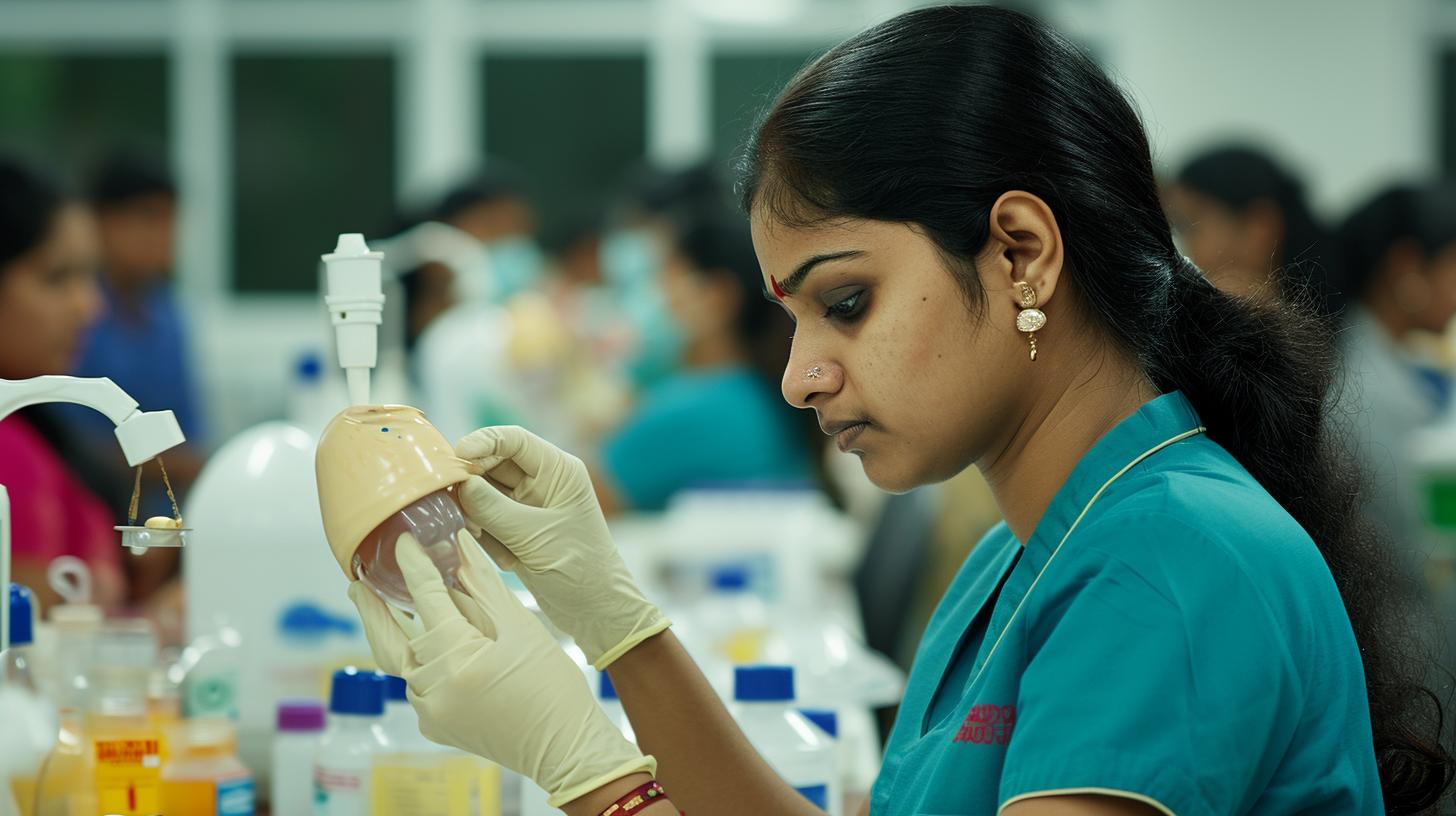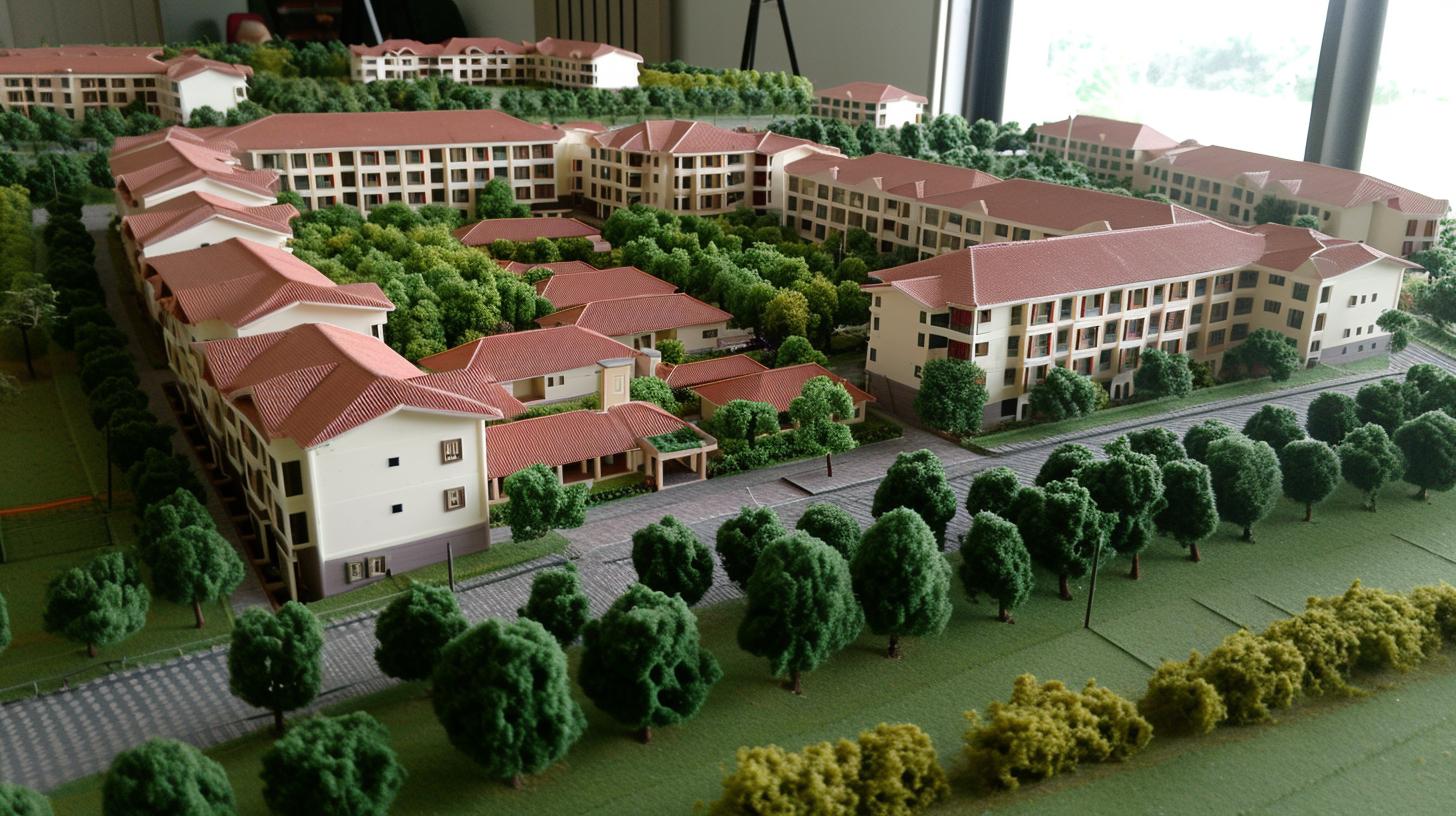
Community health nursing lab models are an essential component of nursing education, providing students with a hands-on learning experience in simulated community health settings. These models play a vital role in preparing future nurses to tackle real-world public health challenges and improve the overall well-being of communities.
In this article, we will explore the significance of community health nursing lab models, their types, benefits, limitations, best practices for implementation, successful case studies, and the future outlook of these educational tools.
As the field of nursing continues to evolve, the need for well-trained and prepared community health nurses becomes increasingly important. Community health nursing lab models serve as a bridge between theoretical classroom knowledge and practical application in diverse health promotion and disease prevention scenarios. By simulating community-based interventions and strategies, these models equip students with the necessary skills and competencies to address complex public health issues effectively.
In the following sections, we will delve into the different types of community health nursing lab models used in nursing education, such as simulation labs, virtual reality labs, and standardized patient encounters. Additionally, we will discuss the benefits and challenges associated with implementing these models in nursing curriculum. Moreover, through real-life case studies and future prospects for development, we will provide insights into how these lab models contribute to advancing nursing education.
The Importance of Community Health Nursing Lab Models
Community health nursing lab models play a crucial role in the education and training of aspiring nurses, preparing them for the complexities and challenges of real-world community health scenarios. These models are designed to simulate various healthcare settings and patient interactions, providing students with hands-on experience and practical skills essential for their future profession.
Simulation Labs
One of the most common types of community health nursing lab models is simulation labs, where students can practice their clinical skills in a controlled environment. These labs often feature life-like mannequins that can mimic a range of medical conditions and scenarios, allowing students to develop critical thinking and decision-making skills as they assess and respond to different patient needs.
Virtual Reality Labs
Another innovative approach to community health nursing education is the use of virtual reality (VR) labs. Through VR technology, students can immerse themselves in realistic healthcare simulations, enhancing their situational awareness and empathy for diverse patient populations. Virtual reality labs also offer a cost-effective and scalable solution for exposing students to a wide range of scenarios without relying on physical resources.
Standardized Patient Encounters
In addition to simulation and VR labs, standardized patient encounters provide an opportunity for nursing students to practice their communication and interpersonal skills in a simulated clinical setting. These encounters involve trained actors portraying patients with specific medical conditions or social circumstances, allowing students to engage in realistic dialogue and develop empathy while honing their assessment techniques.
By incorporating these diverse lab models into nursing education curriculum, educators can ensure that their students are well-prepared to address the complex health needs of communities upon entering the workforce. Community health nursing lab models not only enhance clinical competence but also promote interdisciplinary collaboration, cultural competence, and ethical decision-making – all essential competencies for effective community health nursing practice.
As the field of nursing continues to evolve, embracing innovative teaching strategies such as community health nursing lab models will be paramount in shaping the next generation of competent and compassionate healthcare professionals.
Types of Community Health Nursing Lab Models
Community health nursing lab models are essential tools in nursing education, providing students with realistic and hands-on experiences to prepare them for their future roles in community health settings. There are different types of lab models used in nursing education, each offering unique advantages and opportunities for skill development and learning.
Simulation Labs
Simulation labs are controlled environments that mimic real-life healthcare scenarios, allowing students to practice clinical skills and decision-making in a safe and supportive setting. These labs often feature high-fidelity manikins that can replicate various health conditions and symptoms, providing students with valuable experience in assessment, intervention, and critical thinking.
Virtual Reality Labs
Virtual reality (VR) labs offer an immersive experience for nursing students, allowing them to interact with computer-generated environments and patients. VR technology can simulate complex medical procedures, patient interactions, and emergency situations, offering a dynamic learning experience that enhances student engagement and understanding of community health practices.
Standardized Patient Encounters
In standardized patient encounters, actors or trained individuals portray specific patient roles to create realistic clinical scenarios for nursing students. This model allows students to practice communication skills, patient assessment, cultural competence, and interdisciplinary teamwork in a controlled yet authentic setting. Standardized patient encounters provide valuable insights into the complexities of delivering care within diverse community populations.
These different types of community health nursing lab models not only enhance the educational experience for nursing students but also promote the development of essential clinical competencies required for effective community health practice. By incorporating a variety of lab models into nursing education curriculums, educators can better prepare students for the realities of working in diverse healthcare communities.

Benefits of Using Community Health Nursing Lab Models
Community Health Nursing Lab Models have become an essential component in nursing education, providing students with hands-on learning experiences that prepare them for real-world community health scenarios. The benefits of using these models are extensive and contribute to the overall development and competency of future community health nurses. Here are some key advantages of incorporating community health nursing lab models into the curriculum:
- Enhanced Skill Development: Lab models allow students to practice and refine their clinical skills in a controlled environment before entering actual community settings. This hands-on experience helps build confidence and competence in delivering care to diverse populations.
- Realistic Simulation: Simulation labs provide a realistic representation of community health scenarios, allowing students to apply theoretical knowledge to practical situations. They can encounter various patient cases, environmental challenges, and cultural considerations, enhancing their critical thinking and problem-solving abilities.
- Interprofessional Collaboration: Through standardized patient encounters and team-based simulations, students have the opportunity to collaborate with other healthcare professionals, such as social workers, public health practitioners, and community organizers. This fosters a holistic approach to care delivery and promotes effective communication and teamwork.
In addition to these benefits, the use of virtual reality labs also offers unique advantages by immersing students in interactive, 3D environments where they can navigate through virtual communities and engage in scenario-based learning. As technology continues to advance, the potential for innovation in community health nursing lab models becomes increasingly promising.
Overall, integrating community health nursing lab models into nursing education enhances the overall learning experience for students and contributes to the development of competent, compassionate, and culturally sensitive community health nurses who are well-prepared for the complexities of modern healthcare.
These are just a few examples of how community health nursing lab models provide tangible benefits to nursing education. As technology continues to advance and educational methodologies evolve, it is crucial for educators and institutions to continue exploring innovative ways to integrate these models into their curricula while addressing potential challenges.
Challenges and Limitations of Community Health Nursing Lab Models
Implementing community health nursing lab models in nursing education brings with it a set of challenges and limitations that educators and institutions must navigate. One significant challenge is the allocation of resources, including financial support for acquiring state-of-the-art simulation technology and hiring qualified personnel to oversee lab activities. Many academic institutions struggle with budget constraints, making it difficult to invest in the necessary infrastructure for comprehensive community health nursing lab models.
Moreover, technological limitations may hinder the full integration of virtual reality labs or simulation exercises into nursing curricula. This includes issues related to connectivity, software compatibility, and overall technical support for these innovative educational tools. It is essential for educators to consider these barriers when planning and implementing community health nursing lab models to ensure that all students have equal access to learning opportunities.
Another key limitation is the need for ongoing faculty development to effectively utilize the potential of these lab models in nursing education. Educators must be trained on how to integrate simulation scenarios into their teaching, debrief students after simulations, and provide effective feedback to enhance learning outcomes. Without proper training and professional development opportunities, faculty members may struggle to harness the full pedagogical benefits of community health nursing lab models.
To address these challenges, best practices for implementing community health nursing lab models should include collaborative efforts among faculty members, administrators, and industry partners to secure adequate funding, technological support, and continuous professional development opportunities for educators. By overcoming these obstacles, institutions can maximize the potential of community health nursing lab models in preparing the next generation of competent and confident community health nurses.
| Challenges | Potential Solutions |
|---|---|
| Resource constraints | Collaborative efforts among faculty members, administrators, and industry partners |
| Technological limitations | Investment in infrastructure upgrades and ongoing technical support |
| Faculty development needs | Professional development opportunities for educators on integrating simulation scenarios into teaching |
Best Practices for Implementing Community Health Nursing Lab Models
Community health nursing lab models play a crucial role in the education and training of future nurses, providing them with valuable hands-on experience and skill development in simulated community health scenarios. To effectively implement these lab models in nursing education, educators and institutions can follow best practices to maximize their impact. Here are some recommended best practices for implementing community health nursing lab models:
- Set clear learning objectives: Before incorporating lab models into the curriculum, educators should establish specific learning objectives that align with the skills and competencies students need to develop. These objectives will guide the design and implementation of the lab experiences.
- Utilize diverse model types: Educators should consider incorporating a variety of model types, such as simulation labs, virtual reality labs, and standardized patient encounters, to provide students with exposure to different community health scenarios and challenges.
- Integrate interprofessional collaboration: Collaborating with other healthcare professions, such as social work or public health, can enhance the realism of community health nursing lab models and prepare students for holistic patient care in real-world settings.
- Evaluate and debrief: Following each lab experience, it is essential to conduct thorough evaluations and debriefing sessions to gather feedback from students, identify areas for improvement, and facilitate reflection on their performance.
By adhering to these best practices, educators can ensure that community health nursing lab models are effectively integrated into nursing education curriculum, equipping students with the necessary skills and knowledge to excel in community health settings.

Moreover, institutions should invest in technological resources that support the implementation of these lab models, providing educators with the tools needed to create immersive learning experiences for their students. Additionally, fostering partnerships with healthcare facilities and communities can enrich the authenticity of the scenarios presented through these models.
Case Studies
Community health nursing lab models have proven to be invaluable tools in the education and training of nursing students, preparing them for real-world scenarios and challenges they will encounter in their careers. Through the use of various lab models, nursing students are able to develop essential skills, critical thinking abilities, and clinical judgment necessary for effective community health practice.
Case studies highlighting the successful application of these models in healthcare settings serve as compelling evidence of their significance in nursing education.
One example of a successful application of community health nursing lab models is the use of simulation labs to replicate community health settings. Nursing students are exposed to complex patient scenarios related to community health issues, such as disease prevention, health promotion, and family-centered care. These realistic simulations allow students to apply their knowledge and skills in a controlled environment before engaging with actual patients, thereby enhancing their confidence and competence in addressing community health needs.
Furthermore, virtual reality labs have been instrumental in immersing nursing students in interactive learning experiences that simulate diverse community health environments. By using advanced technology, students can engage in virtual scenarios that mirror the realities of providing care in underserved communities or managing public health crises. These immersive experiences foster empathy, cultural sensitivity, and an understanding of social determinants of health, all vital components of effective community health nursing practice.
Lastly, standardized patient encounters have been implemented as part of community health nursing lab models to assess students’ communication skills, clinical assessments, and care management abilities within a community context. These encounters involve interaction with trained actors portraying specific community members with varying healthcare needs. Through these encounters, nursing students learn to adapt their approach based on individual circumstances while honing their collaboration with other interdisciplinary team members – a crucial aspect of community-based healthcare delivery.
Future of Community Health Nursing Lab Models
The future of community health nursing lab models holds promising advancements and innovations that will continue to shape the landscape of nursing education. As technology continues to evolve, so does the potential for more immersive and interactive learning experiences within the realm of community health nursing. One area of development is the integration of virtual reality (VR) and augmented reality (AR) technologies into nursing lab models, allowing students to engage in lifelike simulations of community health scenarios.
The use of VR and AR in community health nursing lab models offers students the opportunity to navigate through various healthcare settings, interact with diverse patient populations, and practice critical decision-making skills in a controlled yet realistic environment. Additionally, these advanced technologies can enhance collaboration among students by enabling them to work together in simulated scenarios, fostering teamwork and communication essential for effective community health nursing practice.
Moreover, advancements in data analytics and artificial intelligence have the potential to revolutionize community health nursing lab models by providing personalized feedback and adaptive learning experiences for students. By analyzing student performance data within lab simulations, educators can tailor individualized learning pathways to address specific areas of improvement, ultimately enhancing the overall competency and preparedness of future community health nurses.
Overall, as community health nursing continues to adapt to changing healthcare needs and societal challenges, the future of community health nursing lab models will undoubtedly play a crucial role in equipping nursing students with the knowledge, skills, and practical experience needed to address complex public health issues within diverse communities.
| Advancements | Innovations |
|---|---|
| Virtual reality (VR) | Augmented reality (AR) |
| Data analytics | Artificial intelligence |
Conclusion
In conclusion, community health nursing lab models play a crucial role in advancing nursing education and preparing future nurses for the complexities of community health scenarios. These models provide a hands-on learning experience that is essential for developing the practical skills and competencies needed in real-world healthcare settings. By simulating various community health situations, nursing students are better equipped to handle challenges and provide high-quality care to diverse populations.
The implementation of different types of lab models, such as simulation labs, virtual reality labs, and standardized patient encounters, allows for a dynamic and interactive learning environment. This not only enhances students’ clinical skills but also fosters critical thinking and decision-making abilities. The benefits of utilizing these models in nursing education are evident in the increased confidence and preparedness of graduates as they enter the workforce.
While there may be challenges and limitations in implementing community health nursing lab models, such as resource constraints and technological limitations, it is important for educators and institutions to continue striving for best practices in integrating these models into nursing curriculum. By doing so, the future of nursing education can be further enhanced, ensuring that upcoming generations of nurses are well-equipped to address the evolving needs of community healthcare.
Community health nursing lab models will undoubtedly continue to shape the field of nursing education, providing invaluable experiences that contribute to improved patient outcomes and overall community wellness.






